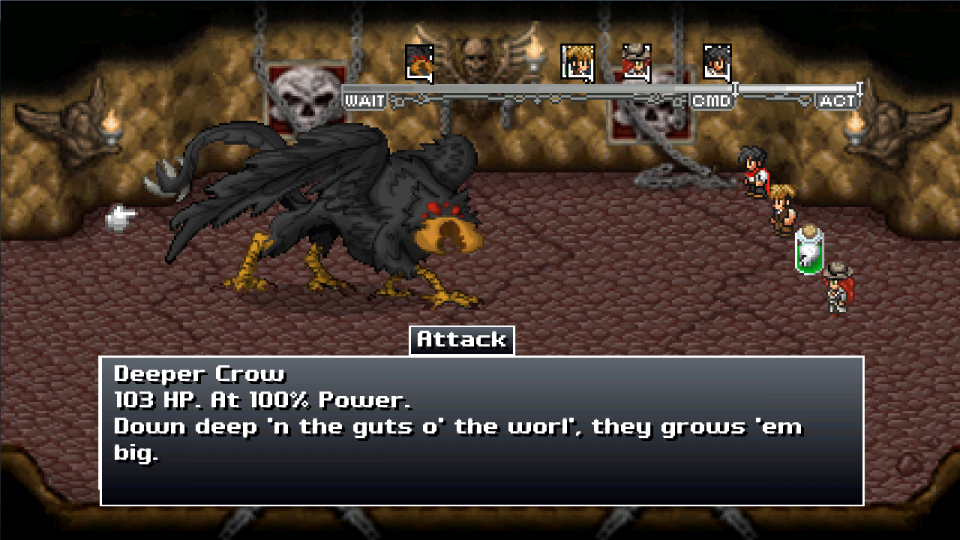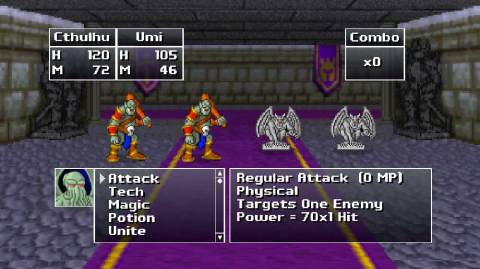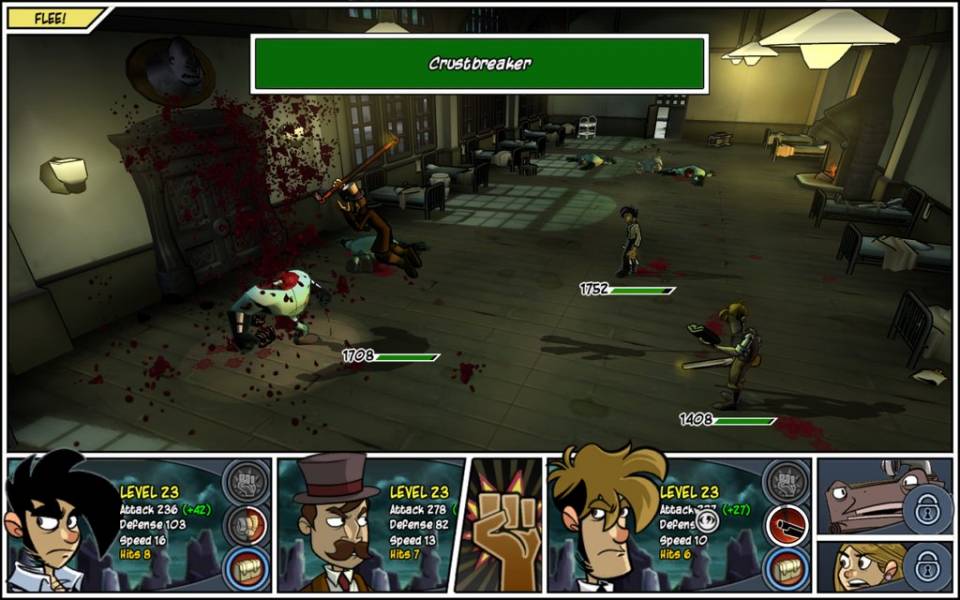
At least on Xbox 360, Penny Arcade released its first two forays into game development the same way most everyone else does: waiting for a slot to open up on Xbox Live Arcade. The slot system is full of problems, but it seems unlikely that much will change on this console.
Their latest, Penny Arcade Adventures: On the Rain-Slick Precipice of Darkness - Episode 3, is taking a different path, instead publishing on Xbox Live Indie Games. It's one that's been well treaded by the game's developer, Zeboyd Games, the studio also responsible for cult classics like Cthulhu Saves the World and Breath of Death VII.

"The thing that really attracted us to it in the first place was that it was pretty much the only [and] first way that a no-name indie developer without a lot of money could release on a home console," said designer Robert Boyd to me last week.
Both Cthulhu Saves the World and Breath of Death VII made their debut on Indie Games, though neither became financial boons for the studio until arriving months later on Steam.
Launching on Xbox Live Arcade to gain a reputation, then showing up a few months later on Steam to reap the financial benefits has become a pretty traditional move for independents.
Zeboyd and Penny Arcade briefly considered releasing Episode 3 through the XBLA system, but that wasn't a very long conversation, especially since the game is coming out on so many other platforms, including PC and iOS.
Part of the reason, explained Boyd, was anticipating that most sales wouldn't come on Xbox 360, anyway.
"Our Steam sales are exponentially greater than our Xbox Live Indies sales," he said.
Episode 3 launched on Steam this week, and comes to Indie Games "later," a delay caused by a last-minute bug.
Indie Games allows Zeboyd and Penny Arcade to sidestep the criticized system, have more options for pricing (it's well known that Microsoft largely determines what games are priced at, not developers and publishers), not be charged thousands for issuing a patch, and have more direct control over the release date--there are no "slots."
Microsoft has shown a hot-and-cold relationship with Indie Games, at times upgrading it with needed new features like increased file sizes and the ability to publish a game when the developer says so, rather than immediately after surviving the service's peer review system. Launching a game at 3:00 a.m isn't a great strategy! Other times, Microsoft's come under fire for burying the service on the dashboard, preventing many from ever discovering it.
"It’s not so much that Microsoft has tried to stomp it out or make it horrible or anything," said Boyd. "I think it’s just a low priority for them, and so you have a few people at Microsoft who are really pushing for getting the platform improved and better visibility."
I've heard similar stories from both sides of the coin. Several developers within the community have had nothing but positive things to say about the Microsoft employees who are assigned to engage with Indie Games, but it's the act of getting changes made, changes that require a thumbs-up from above those people, that causes issues. Microsoft employees I've spoken with expressed frustration with how long it can take to get anything approved.
Like Boyd said, it's just a low priority, and it's unlikely that will change anytime soon.

Reservations and all, it's hard to imagine Zeboyd being in its current position without Indie Games. When Zeboyd began the approval process to appear on Valve's Steam service, it was able to point towards sales data and reviews that were a direct result of being part of a console ecosystem, which by default raises a game's overall visibility.
"It was great for us, in that it gave us a platform to put our games that had good visibility, compared to staking it on some random website," said Boyd. "And I’m sure that [was] a huge part of the reason why Steam agreed to work with us in the first place."
A key difference between Steam and Indie Games is curation. There are thousands of games available on Steam, but they're present because Valve said it was okay. That's not the case on Indie Games, where anything can be published so long as it's playing within Microsoft's guidelines.
"I think the platform’s really gotten a reputation for being filled with a lot of 'my first programming' projects, which, I mean, are good--everybody has to start somewhere," said Boyd. "But it’s not necessarily good for improving the reputation of the service, and getting people to check into it on a regular basis."
As a result, there just aren't many people making money on the platform. Unless you're, say, a variation on Minecraft like FortressCraft, and you've sold a million copies. Games like FortressCraft are, sadly, an outlier.
Episode 3 may represent the most high-profile release for Indie Games yet. The move should raise some red flags for Microsoft, who ought to wonder why a developer would actively want to go around its premiere service. Microsoft's ahead of the game because it was smart about digital early on, but soon enough, the industry will hit reboot.